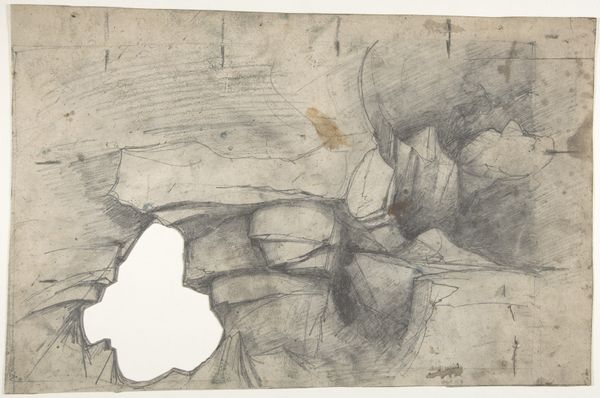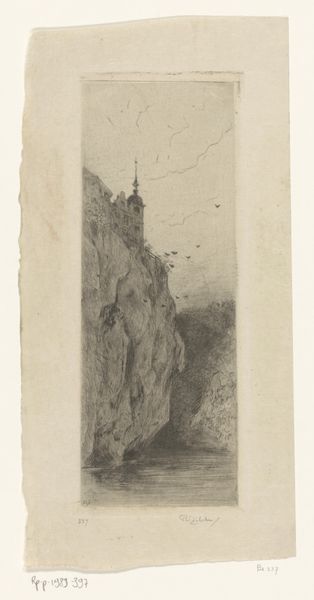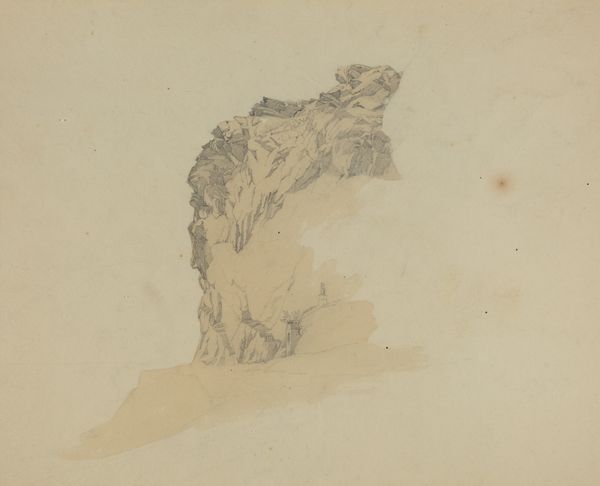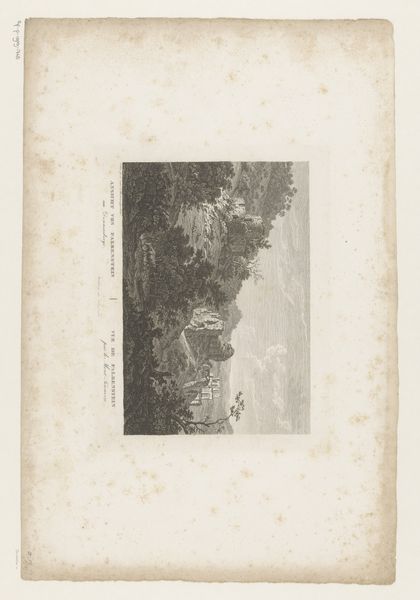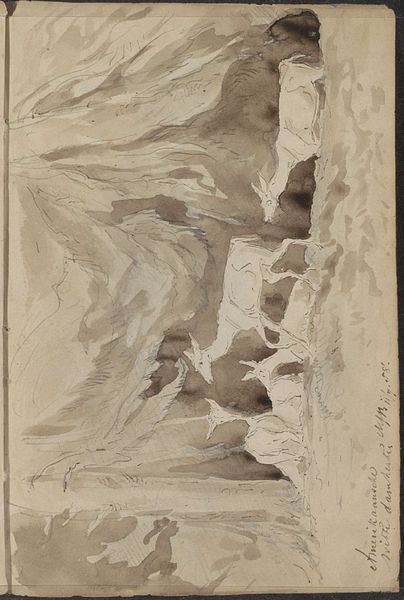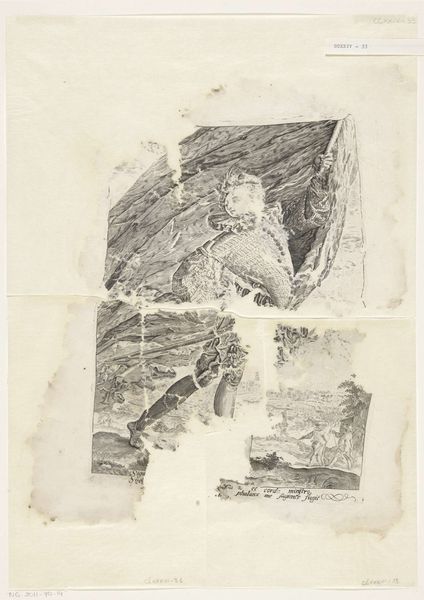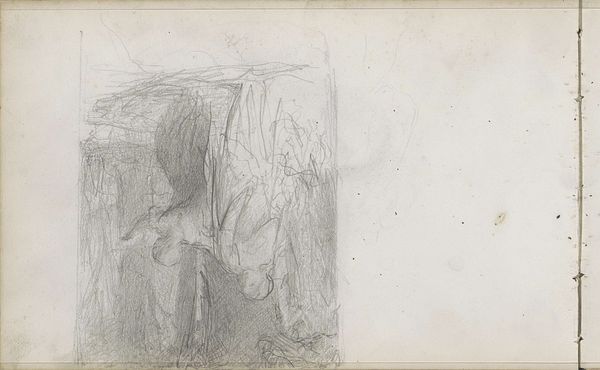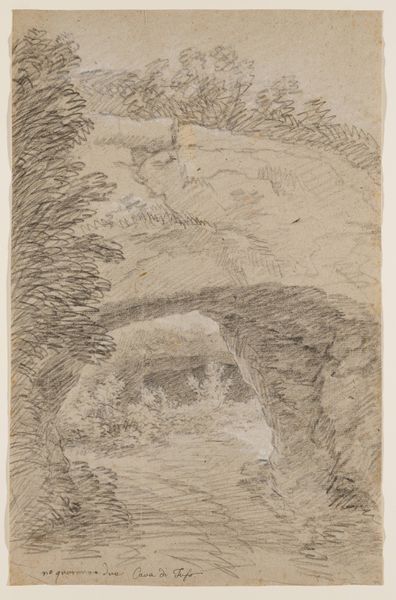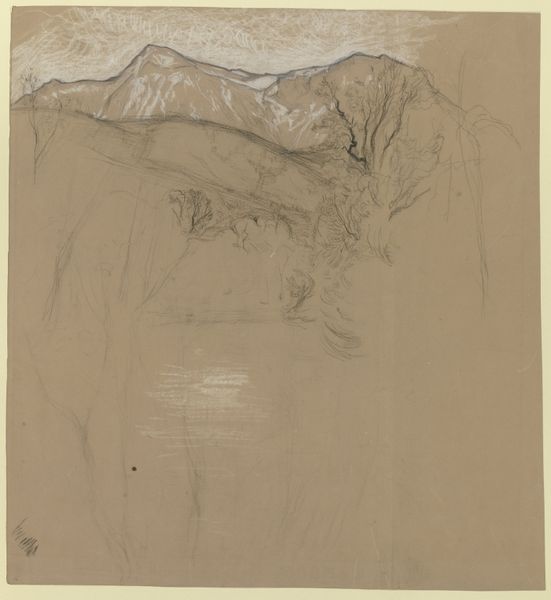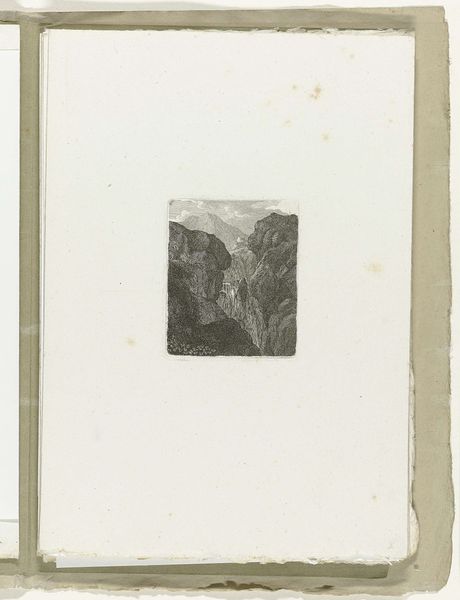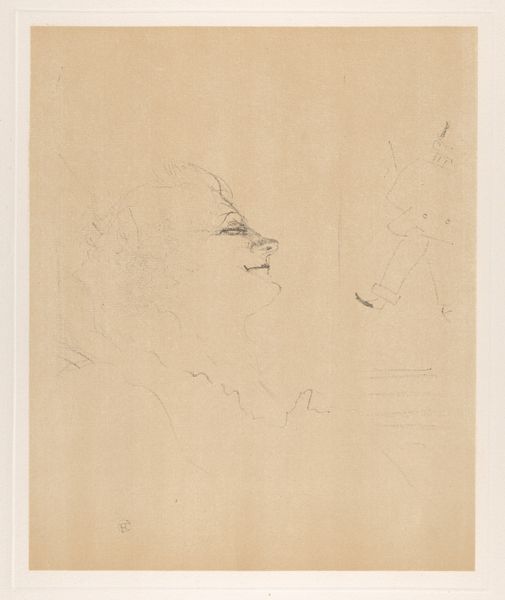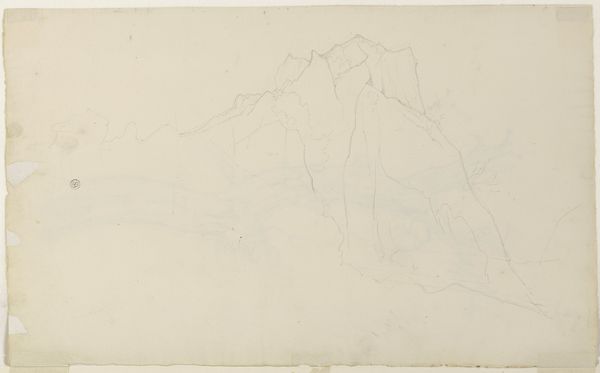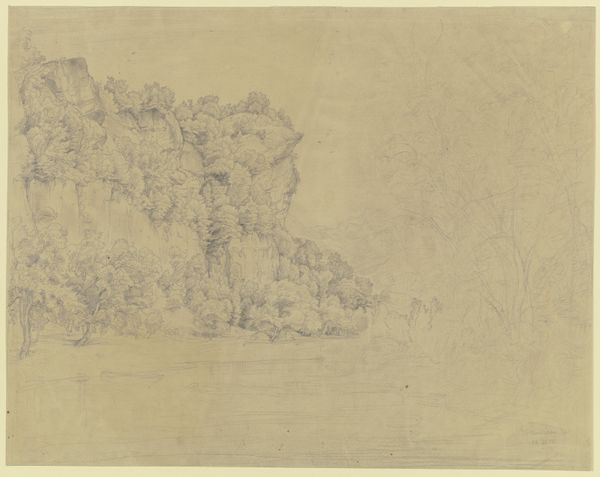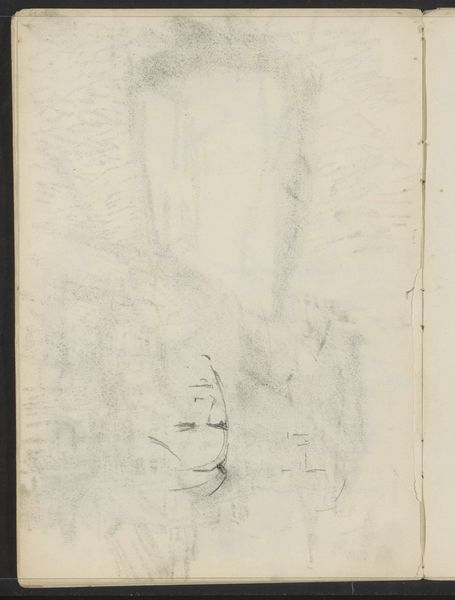
drawing, paper, watercolor
drawing
landscape
etching
paper
watercolor
romanticism
watercolor
Copyright: Public Domain
Curator: Welcome. We’re standing before Carl Philipp Fohr's “Waterfall in the Black Forest,” created around 1814. This rendering employs watercolor and drawing techniques on paper. Editor: It feels…unfinished. Almost like a fragment discovered in someone’s studio, the falls depicted with this incredible rushing energy in pale blues and whites, abruptly cut off by the bare paper around it. Curator: Precisely. This work emerged during a time when Romanticism prioritized feeling and individual experience, notably emphasizing humanity's relationship to the natural world. Fohr, along with other artists of the period, often sought inspiration in untouched landscapes, viewing them as spiritual spaces. The Black Forest itself carried heavy cultural weight within Germany. Editor: And you see that in the sketchy linework outlining what appears to be faint mountains and trees around the bolder illustration? The incompleteness lends the artwork an ethereal quality, suggesting a landscape that's half-seen, half-dreamed. It almost captures a fleeting moment, the transient nature of water. Curator: The seeming lack of finish may be less of a decision of artistic value and more one that reflects his brief life. He would soon leave Germany for Rome and succumb to an accident while only in his early twenties. So this small drawing stands as a symbol, and maybe an unrealized ambition. Editor: Well, despite its incomplete appearance, the contrast is fascinating, really. The defined, almost turbulent waterfall stands in stark contrast to the sketched periphery. I read that as a formal attempt to portray the awesome power of nature itself. It dwarfs any idea of people even being in this picture. Curator: The politics of Romanticism emphasized a growing sense of national identity linked to the land. These raw, unfiltered landscapes became associated with German virtue and served as a silent rebuke of French cultural dominance under Napoleon. This approach elevated landscape painting from mere background scenery into a carrier of national sentiment. Editor: Regardless, that contrast does work wonders from a composition standpoint. I might like this MORE because it is less polished. Thank you for those additional thoughts. Curator: And thank you for looking closer at the waterfall's inherent and compelling forms.
Comments
No comments
Be the first to comment and join the conversation on the ultimate creative platform.
